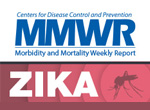COCA Now: September 12 - Tetanus in Areas Affected by a Hurricane: Risk, Prevention, and Management Guidelines for Clinicians

If you have any questions on these or other clinical issues, please write to us at coca@cdc.gov
Sign up for Email Updates and Reminders
Available for download: September 12, 2017, COCA Now Email
Tetanus in Areas Affected by a Hurricane: Risk, Prevention, and Management Guidelines for Clinicians

Summary
Exposure to flood waters does not increase the risk of tetanus. Therefore, tetanus immunization campaigns for evacuees from flooding disasters are not needed. However, during evacuation and flood cleanup, emergency responders, cleanup workers, and volunteers may be at increased risk for wounds. These workers should make sure they are up to date with tetanus vaccination before starting cleanup activities.

Tetanus or ‘lock-jaw’ is a toxin-mediated, noncommunicable, severe and potentially fatal disease requiring emergency treatment. The disease is caused by an anaerobic bacteria, Clostridium tetani. Tetanus spores, ubiquitous in the environment, enter the body through any breach in the skin and can cause disease that is characterized by muscle spasms, particularly in unvaccinated on incompletely vaccinated people. Each year, about 30 cases of tetanus are reported in the United States. Nearly all cases of tetanus are among people who have either never received a tetanus vaccine, or have not completed the recommended childhood vaccination series, or adults who do not stay up to date with their 10-year booster shots.
Protection Against Tetanus
Vaccination prevents tetanus. Tetanus vaccines are recommended for people of all ages. Tetanus vaccines are routinely recommended during infancy at 2, 4, and 6 months of age, with booster doses at ages 15-18 months, 4-6 years, and 11-12 years. But protection acquired against tetanus after vaccination during childhood, or from a prior infection, does not last a lifetime. This means that adults need an age-appropriate tetanus booster shot every 10 years to maintain protection. Being up to date with your tetanus vaccine is the best tool to prevent tetanus.
Risk of Tetanus After Exposure to Flood Water
Exposure to flood waters does not increase the risk of tetanus. However, some people impacted by floods and other disasters may have wounds such as puncture to the skin, cuts, bruises, lacerations, scrapes, or other skin injuries that become contaminated with flood waters, human or animal wastes, soil, dirt, or saliva. Besides treatment of these wounds, the vaccination status of such persons should be assessed and an age-appropriate tetanus vaccine given if needed. In some of these situations, the clinician may decide that a tetanus vaccine is needed as early as 5 years since the last dose. Being up to date for tetanus vaccine can greatly simplify the treatment for any wound that might occur.
Risk of Tetanus to Emergency Responders, Clean-up workers, Volunteers
During evacuation and flood cleanup, emergency responders, cleanup workers, and volunteers may be at increased risk for wounds (as described above). For this reason, before starting evacuation or cleanup activities, such workers should know their tetanus vaccination status and make sure that they are up to date for tetanus vaccine to simplify the treatment for any wound that might occur. Irrespective of the type of wound, responders or volunteers who are up to date with vaccination do not require prophylaxis with tetanus immune globulin (TIG).
Mass Vaccination Campaigns to Prevent Tetanus during Flooding
Tetanus immunization campaigns for evacuees from flooding disasters are not needed. However, each state and local health department can determine what is best for their evacuees after any given disaster, including in terms of vaccination efforts.
Wound Management for Tetanus Prevention
Risk of tetanus disease depends on the type and condition of the wound and immune status of the patient.
The following steps should be taken to prevent tetanus:
Assess the type of wound and provide appropriate wound care.
Wounds may be simple, superficial and clean. Other wounds such as those contaminated with dirt, feces, soil, and saliva; puncture wounds; avulsions; and wounds resulting from missiles, crushing, and burns may pose a higher risk for tetanus. Wounds containing devitalized tissue (e.g., necrotic or gangrenous wounds), frostbite, crush injuries, avulsion fractures, and burns are particularly conducive for proliferation of C. tetani. All wounds should be cleaned, dirt or foreign material removed, and necrotic material removed or debrided.
Evaluate the immunization status of the patient.
Unvaccinated persons with any type of wound should start and complete a primary series with an age-appropriate tetanus toxoid-containing vaccine (DTaP, Tdap, or Td) as currently recommended by CDC. Persons with unknown or uncertain history of receiving previous prior doses tetanus toxoid-containing vaccines should be considered to have had no previous tetanus toxoid-containing vaccine and a primary series should be completed. This is because early doses of toxoid may not induce adequate immunity, but only prime the immune system.
Management of persons who have completed a 3-dose primary tetanus vaccination series.
For persons with simple clean wounds, if the last dose of a tetanus toxoid-containing vaccine was received less than 10 years ago, they are considered protected against tetanus and do not require another dose of tetanus toxoid-containing vaccine as part of the current wound management. Otherwise, a booster dose should be administered.
For persons with contaminated wounds, if the last dose of a tetanus toxoid-containing vaccine was received less than 5 years ago, they are considered protected against tetanus and do not require another dose of tetanus toxoid-containing vaccine as part of the current wound management.
Assess need for administering TIG for prophylaxis.
TIG provides temporary immunity by directly providing antitoxin. TIG can only help remove unbound tetanus toxin but cannot neutralize toxin that is already bound to nerve endings. Persons who have contaminated and dirty wounds and are either unvaccinated, or have less than 3 doses of tetanus vaccines, should receive TIG for prophylaxis. The dose of TIG for prophylaxis is 250 IU administered intramuscularly.
People with HIV infection regardless of CD4 count and immune status, or severe immunodeficiency who have contaminated wounds (including minor wounds) should also receive TIG, regardless of their history of tetanus immunizations.
Do not use antibiotics for prophylaxis against tetanus.
Antibiotic prophylaxis against tetanus is not recommended, but wounds should be observed for signs of infection and promptly treated if signs of infection are detected.
Diagnosis of tetanus
There is no laboratory test to confirm tetanus. The diagnosis is based on clinical symptoms. Tetanus should be suspected in a person with a recent history of an open, contaminated wound, who develops localized muscle spasm around the wound, or spasm of muscles of the jaw, or generalized muscle spasms, particularly if the person is either unvaccinated, incompletely vaccinated, or not up to date with tetanus vaccinations. It should be noted that an obvious wound may be absent in about 10% cases.
Additional information on treatment and management of tetanus cases is available at
- https://www.cdc.gov/tetanus/clinicians.html
- American Academy of Pediatrics. Tetanus. In: Kimberlin DW, Brady MT, Jackson MA, Long SS, eds. Red Book®: 2015 Report of the Committee on Infectious Diseases. American Academy of Pediatrics; 2015; 773–8.
Further guidance on tetanus vaccination of responders and residents, can be found on the following CDC websites:
https://www.cdc.gov/disasters/floods/workersafety.html
https://www.cdc.gov/disasters/disease/immunizationqa.html
https://www.cdc.gov/disasters/disease/tetanus.html
https://www.cdc.gov/vaccines/schedules/easy-to-read/index.html
https://www.cdc.gov/tetanus/clinicians.html
- Page last reviewed: September 15, 2017
- Page last updated: September 15, 2017
- Content source:
- Maintained By:





 ShareCompartir
ShareCompartir